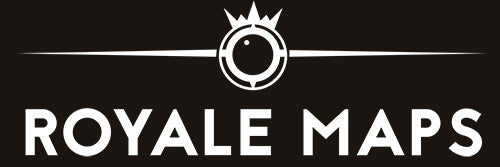Today, we delve into the enigmatic world of Abraham Ortelius and his mesmerizing Islandia Map, a fantastic map of Iceland created in the 16th Century. This masterpiece is a cartographic wonder and a portal to mysteries, inspirations, and mythical creatures.
The man behind the map.

This man is Abraham Ortelius, a 16th-century cartographer, was a visionary whose work transcended the boundaries of conventional mapping. Born in 1527, this Flemish genius not only reshaped the way we perceive geography but also left behind a legacy that continues to intrigue scholars. Ortelius is credited with creating the world's first modern atlas! The "Theatrum Orbis Terrarum" (Theatre of the World), 1570. This atlas compiled various maps into a single cohesive volume, revolutionizing the way geographic information was presented. It provided a comprehensive and systematic view of the world, setting a new standard for cartography.
The inclusion of the Islandia Map within "Theatrum Orbis Terrarum" was influenced by a fervent interest in exploration and a fascination with the unknown. The representation of Islandia, like other regions on the map, was a blend of existing geographical knowledge, speculative information, and creative embellishments.
An Odd looking Islandia.

The representation of Islandia on Abraham Ortelius' map is wild and rather inaccurate. This was influenced by a combination of factors, including the limited geographical knowledge of the time, cultural perceptions, and the cartographer's creativity. During the 16th century when Ortelius created the map, there were significant gaps in the understanding of distant lands, leading to speculative and imaginative depictions.
Ortelius likely drew inspiration from a variety of sources, including ancient texts, travelers' accounts, and folklore. The map, therefore, becomes a blend of factual information and the cartographer's interpretation, creating a representation that is both a product of the knowledge available at the time and a reflection of the cultural and artistic sensibilities of the Renaissance era.
Decoding the Mysteries.

To understand the Islandia Map, we must unravel the threads of inspiration woven into its intricate details. Ortelius drew inspiration from a myriad of sources – ancient texts, folklore, and the spirit of exploration that defined the Renaissance era. All fueled Ortelius' imagination.
At first glance, the Islandia Map appears to be a geographical representation, but a closer inspection reveals a tapestry of mysteries. What hidden symbols and messages did Ortelius embed within the contours of the map?
-
Cryptic Inscriptions: Ortelius is believed to have incorporated mysterious inscriptions or coded messages within the map, possibly referencing ancient texts or esoteric knowledge. Given the political climate of Ortelius' time, it's thought that the map contains subtle political statements or commentary disguised within the geographic features and illustrations.
-
Symbolic Imagery: Certain illustrations and symbols scattered across the map carry symbolic meanings, representing ideas, beliefs, or hidden messages known to Ortelius and his contemporaries. The fantastical creatures depicted on the map symbolize more than mere artistic expression. They represent cultural or allegorical concepts.
-
Navigational Clues: Maps during this era were sometimes used to convey navigational secrets. It is believed that Ortelius included subtle hints or clues to aid navigators in their explorations.Numbers and measurements on the map might hold numerical significance as part of a coded message.
Mythical Creatures and Wonders.

One cannot explore the Islandia Map without encountering its inhabitants – mythical creatures and fantastical beings that populate the edges of Ortelius' creation. The majestic sea serpents, though purely mythical, symbolize the mysterious and treacherous nature of uncharted waters. They echo the fears and uncertainties of maritime exploration during Ortelius' time. Each creature tells a story that transcends the realms of reality. It you want to know more about the wonders that Ortelius dared to imagine, read our post on the Carta Marina and its beasts.
Unveiling the Islandia Map Today.
As we bring this exploration to the present day, we examine the impact and relevance of the Islandia Map in contemporary times. Ortelius encouraged collaboration and accuracy in mapping, which still influences cartographers today. His bold and creative approach, like drawing mythical creatures on maps, teaches us to see maps as more than just tools but as stories of exploration. Ortelius showed that working together and staying open to new ideas is crucial for making good maps in a world that is always changing.
In Conclusion.
The Islandia Map by Abraham Ortelius is a testament to the power of human imagination and the pursuit of knowledge. The Islandia Map by Abraham Ortelius is like a magical door to a time when people explored unknown places. It's a window to a time when there were new and mysterious lands waiting to be discovered. The map sparks curiosity and wonder, making us excited about what we don't know. It's a reminder of a special time in history, where the real world mixed with imaginative ideas. This map's lasting fascination inspires us to keep exploring and discovering the magic in the world of making maps.

